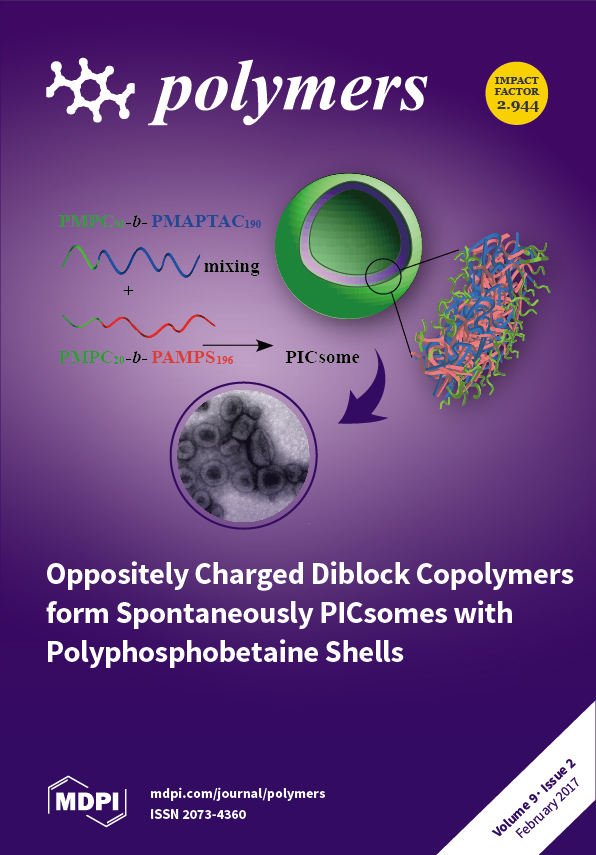Developing sustainable, low viscous and efficient solvents are always advantageous to the processing/fabricating of cellulose materials in practical applications. To this end, in this work novel solvents were developed; ([Amim][CH
3COO]/PEG) by dissolving polyethylene glycol 200 (PEG-200) in 1-allyl-3-methylimidazolium acetate ([Amim][CH
3
[...] Read more.
Developing sustainable, low viscous and efficient solvents are always advantageous to the processing/fabricating of cellulose materials in practical applications. To this end, in this work novel solvents were developed; ([Amim][CH
3COO]/PEG) by dissolving polyethylene glycol 200 (PEG-200) in 1-allyl-3-methylimidazolium acetate ([Amim][CH
3COO]). The solubilities of cellulose in [Amim][CH
3COO]/PEG solvents were determined as a function of temperature, and the possible dissolution mechanism of cellulose in [Amim][CH
3COO]/PEG solvent was investigated. The novel solvent exhibits outstanding advantages for good dissolution capacity of cellulose, such as low viscosity, negligible vapor pressure, and recycling capability. The [CH
3COO]
− anion and the [Amim]
+ cation of [Amim][CH
3COO] in [Amim][CH
3COO]/PEG-10 are the driving force for cellulose dissolution verified by the
13C NMR spectra. In addition, the regenerated cellulose films from [Amim][CH
3COO]/PEG solvent were characterized by scanning electron microscopy (SEM), X-ray diffraction (XRD), attenuated total reflectance Fourier transform infrared spectroscopy (ATR-FTIR), and thermogravimetric analysis (TGA) to estimate their morphologies and structures.
Full article






